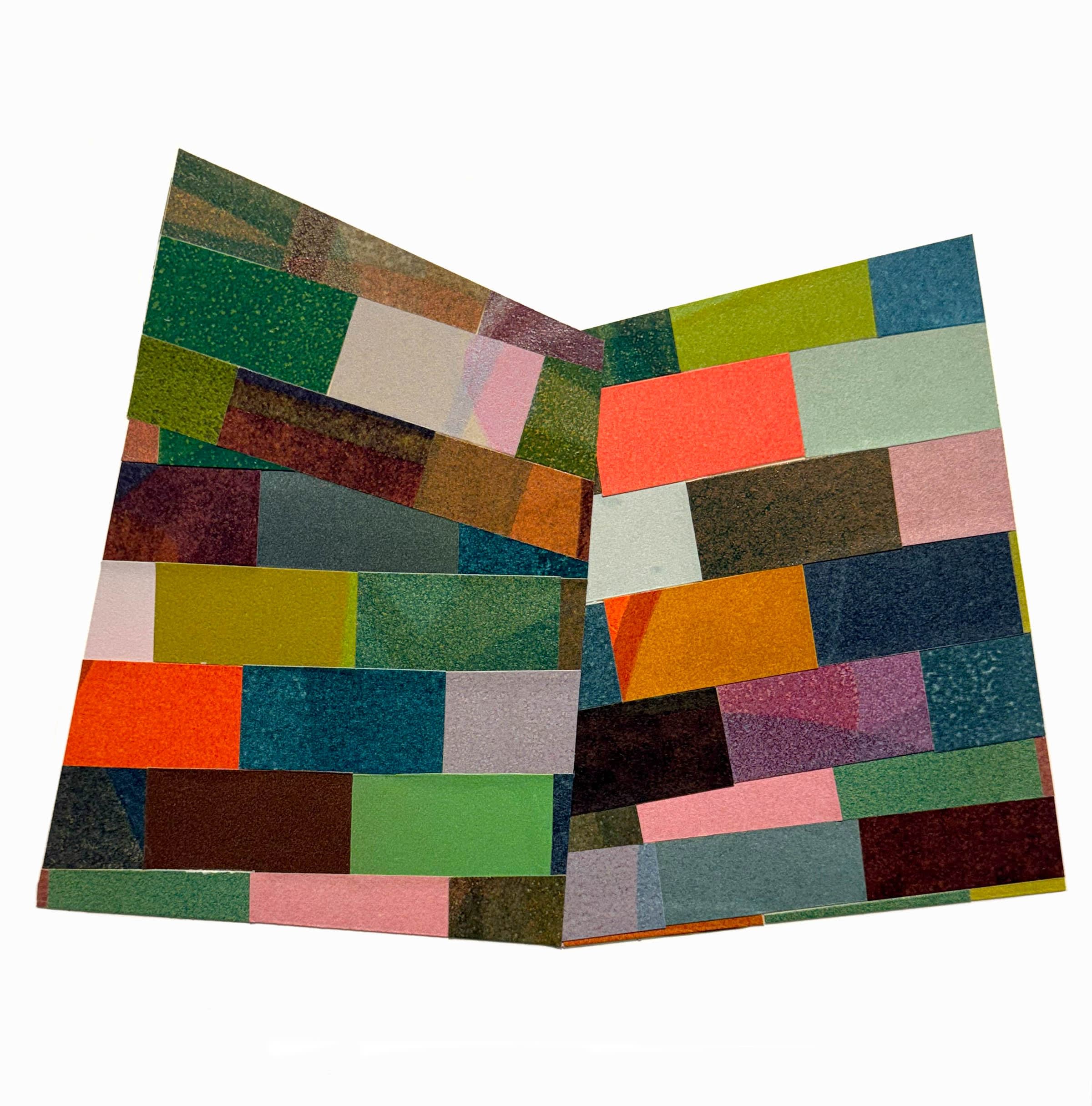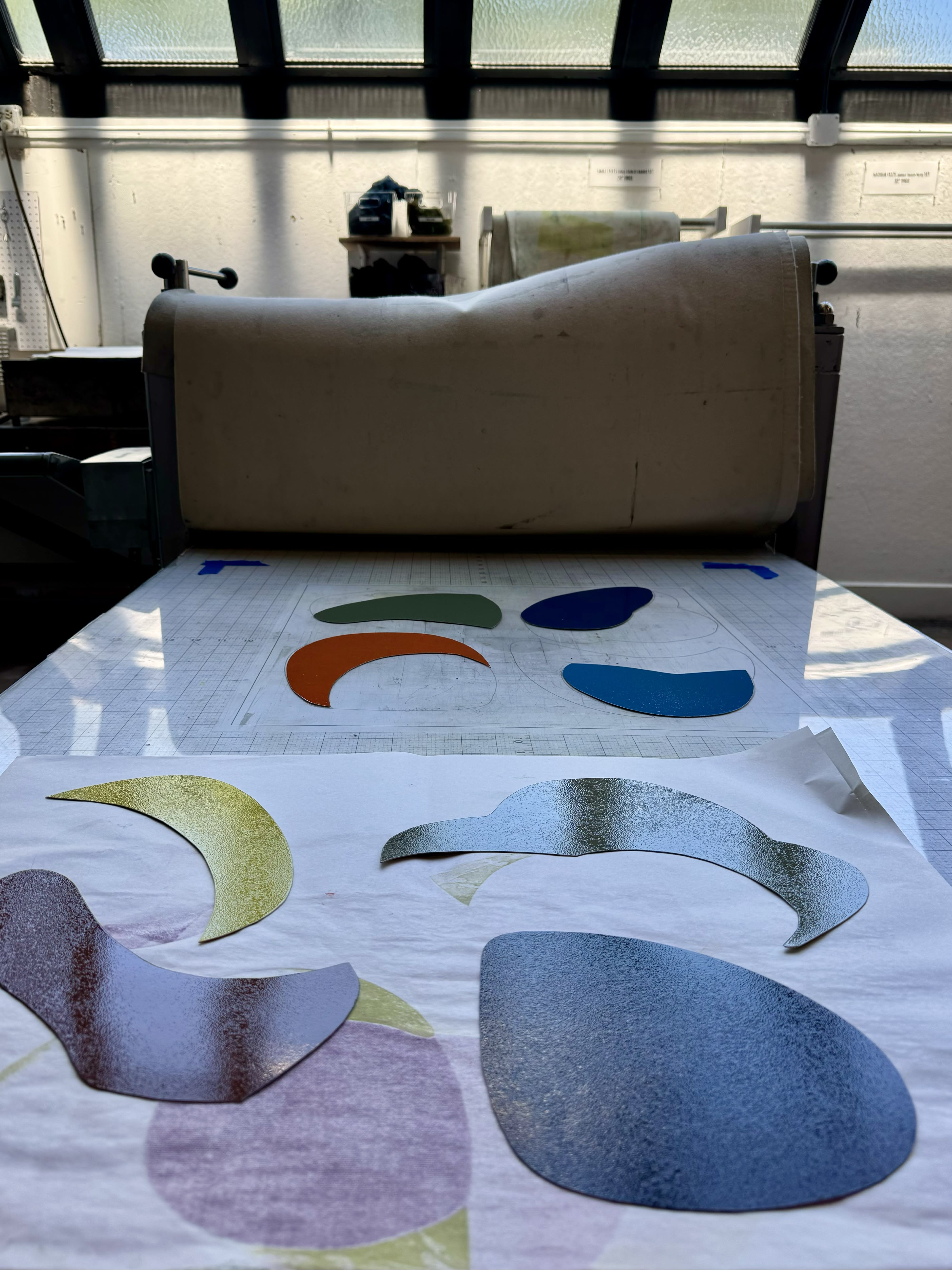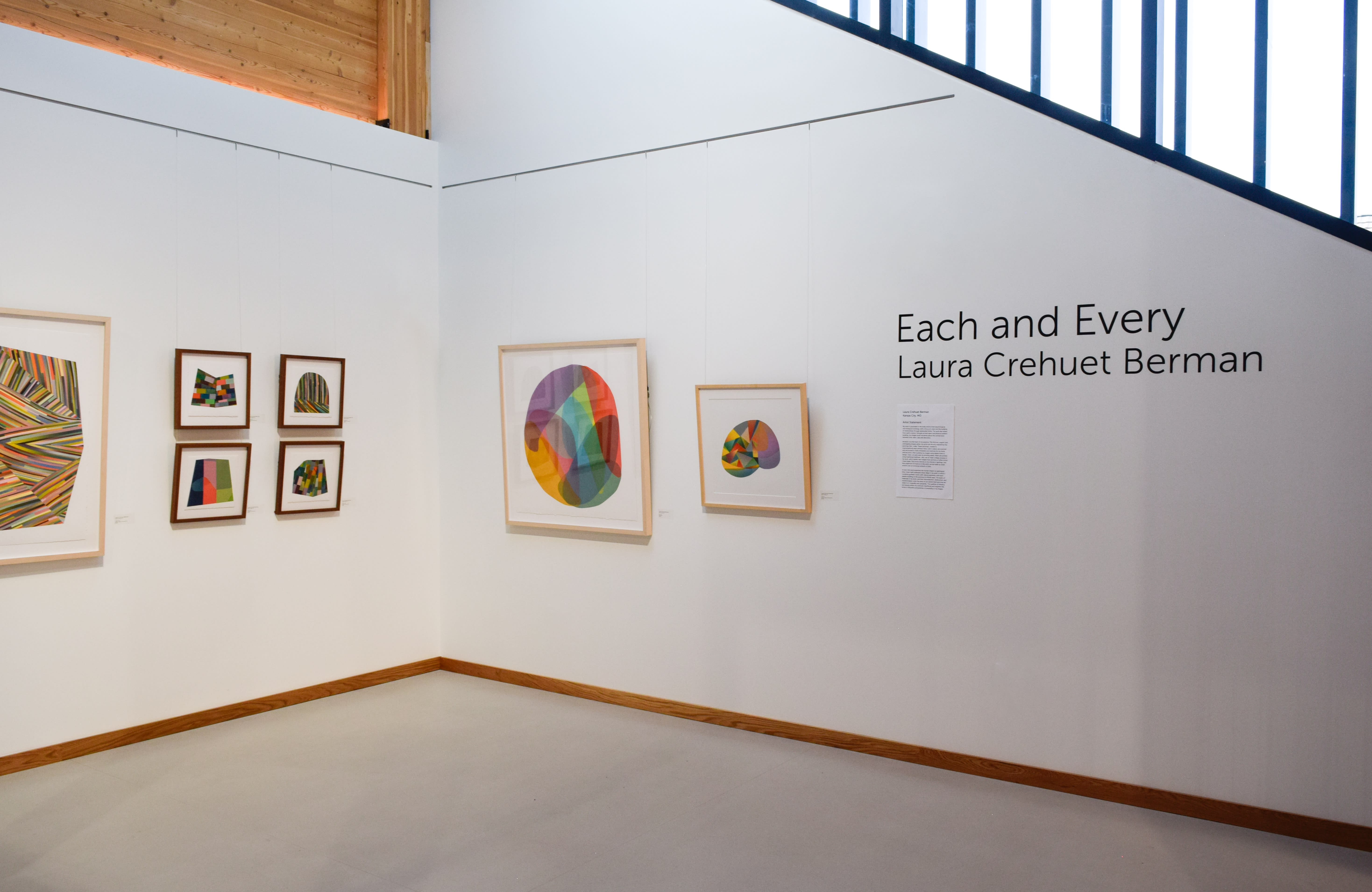
Image Credit: Lindsay Clipner/Gypsy Creative
We are excited to launch this new series of artist features! These Q&A's will take a deep dive into the proccesses and inner workings of our artists. The first in this series focuses on Kansas City-based printmaker Laura Creheut Berman – the featured artist of Cura's first solo show, Each and Every.
You’ve cited your upbringing in Barcelona as a major point of inspiration for you, and throughout your career you’ve lived and exhibited in a variety of places. Could you elaborate on how you interact with the settings around you? How do you keep track of the tangible and intangible influences that inspire you?
As a dual citizen, and as someone who has lived in ten states and traveled extensively throughout the United States, the intangible aspects of the places I have experienced are what I keep. I am a proponent of the idea that what you take in (in every sense) influences what you bring forth and contribute to the world. My travel experiences are directly channeled into my creative work. My work references the feeling of spatial dynamics between what it feels like to be within a specific setting. Especially in settings that are the least mediated by humans, this may be a feeling of significance or wonder, or an unsettled or unsure feeling, or anything in-between. I find and document tiny parts of these settings – a crack in a rock, an edge of a leaf, a subtle pattern in the sand, the color of the distant horizon. These photographs are a reference for shapes and patterns in my work.

You’ve articulated that your artistic process is intensely dynamic – an amalgamation of building layers, mixing colors, and forming patterns. What keeps you curious throughout your process and what sparks inspiration when you might feel stuck?
Early on in my career, I decided to respectfully stretch the traditional approaches I had learned in the print medium. Instead of producing editions of prints, in which each image was repeated, I created monoprints. This approach enabled me to stay alive in my process of making. Instead of finding just one solution for the images I create, I explore endless possibilities with colors, layers, and compositions. My process of working is alluvial – everything builds upon a preceding moment or action. Ideas work the same way for me. Trying one thing in my work, whether that is an aesthetic decision or a technique, naturally leads to the next idea.

Your website provides a relatively intimate peek into your practice and your studio process. How do you approach documenting your process? Do you envision it as a scientific process, a free-flowing creative journey, or some parallel fusion of the two?
Thank you for asking about this! It is definitely a fusion of these. Instead of a written blog on my website, I decided to create a visual journal to document my creative journey. My printmaking process is inherently scientific, as is the research that I undertake for my work. I document these aspects along the way – however there are many days I forget to turn the camera on, too. Those are the days where the flow of creative work itself is the only thing I am engaged in.

We were honored to display your solo show, Each and Every, as the inaugural exhibit here at Cura Contemporary. In what ways, if any, does the format of a solo show influence your perspective on your work?
Cura Contemporary’s opening weekend was such a special time for the gallery and its community, and I was so glad to be there to experience and celebrate this event. “Each and Every” brings together works from a few different recent series of prints and collages. As I visualized these works coming together, the idea that came to mind is that each color, each shape, each contour, and each pattern found in these images holds equal significance within the whole group of works. This matches my philosophy that decisions made within the flow of making holds significance, and even the smallest observation within my research can have tremendous effect on the overall work.

I’d love to know more about your interview series Reflections on Color. Can you tell us a little more about the inception of the project?
“Reflections on Color and Printmaking” began in 2020 as a series of short interviews with contemporary artists. The project shares unique insights about color regarding its material qualities, conceptual aspects, theoretical grounding, psychological influences, and cultural underpinnings; all in the context of contemporary printmaking and print media. I have found in this project that color is related to how artists “feel” their way through their work, and that this is not easy to put into words. Decisions about color are personal and usually involve really interesting stories–providing insight to an artist’s work that goes beyond a general artist statement.
How has Reflections on Color shaped your own artistic practice? What have you found most gratifying about the project? Lastly, do you have a dream artist you’d like to interview for the series?
I am currently in the process of writing a book that expounds on the ideas within the “Reflections on Color and Printmaking” project. In 2024 I worked as a Fulbright Senior Scholar at University of Canberra in Australia, researching printmaking, print publishers, and artists who work in contemporary print, throughout Australia and New Zealand. Overall, this project has underscored for me that color is both a physiological and psychological phenomenon. As an artist, I am a natural and intuitive colorist. This ongoing research has helped me define a context for my own choices regarding color. For instance, I understand more clearly now why my palettes work best with a balance of inorganic and organic pigments. I’d love to interview Polly Apflebaum, Jacob Hashimoto, Jane Hammond, Mark Bradford, Julie Mehretu, and William Kentridge for this project.
